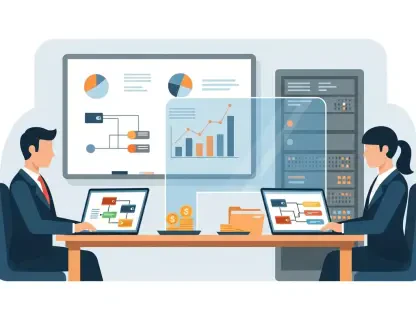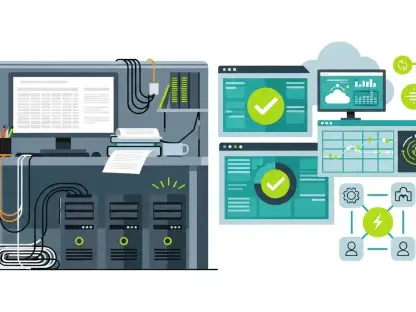I’m thrilled to sit down with Kofi Ndaikate, a leading voice in the fintech space, whose deep knowledge of blockchain, cryptocurrency, and regulatory frameworks has shaped innovative thinking in the banking industry. Today, we’re diving into the hottest topics from Sibos 2025, held in Frankfurt, Germany, where global financial leaders gathered to explore the future of banking. Our conversation touches on the transformative role of AI in banking, the urgent need for core system modernization, and groundbreaking partnerships that are redefining the industry. Let’s unpack how these developments are poised to reshape finance as we know it.
How would you describe the current landscape of AI adoption in banking, based on the insights shared at Sibos 2025?
Well, AI is undeniably the talk of the town in banking right now. At Sibos 2025, it was clear that there’s a huge amount of investment flowing into AI, but the reality is that many of these projects aren’t making it to full implementation. There’s a lot of excitement around the potential, especially in areas like fraud prevention and customer engagement, where about half of banking executives are actively investing. However, the other half seem to be sitting on the sidelines, which shows a divide in how ready the industry is to fully embrace this tech. It’s a mixed bag—there’s promise, but also hesitation.
What do you think are the main reasons so many AI initiatives in banking fail to reach live production?
A big factor is what’s been called “POC or pilot fatigue.” Essentially, banks are running countless proofs of concept and pilot programs, but they often stall before scaling up. This can happen due to a lack of clear business value, integration challenges with legacy systems, or simply not having the right talent to move from experiment to execution. There’s also a risk aversion in banking—given the regulatory scrutiny, many institutions would rather play it safe than push unproven tech into production.
Can you break down the concept of “POC or pilot fatigue” in AI banking projects and why it poses such a hurdle?
Absolutely. POC, or proof of concept, and pilot fatigue refers to the exhaustion that sets in when banks repeatedly test AI ideas without seeing them through to full deployment. Each pilot takes time, resources, and buy-in from multiple stakeholders, and when these projects don’t progress, it creates skepticism about AI’s value. The challenge is often in aligning the tech with real-world banking needs, navigating regulatory constraints, and justifying the cost to leadership. It’s draining, and over time, it can sap enthusiasm for innovation.
Fraud prevention and customer engagement were highlighted as key areas for AI in banking. How is AI making a real impact in these spaces?
In fraud prevention, AI is a game-changer because it can analyze massive amounts of transaction data in real time to spot unusual patterns that might indicate fraud. It’s far more efficient than manual processes. For customer engagement, AI is powering personalized experiences—think chatbots that anticipate needs or tailored product recommendations based on spending habits. These tools not only improve customer satisfaction but also help banks build stronger relationships, which is critical in a competitive market.
What’s the difference between generative AI and explainable AI, and why does this matter in a regulated industry like banking?
Generative AI, like the models behind creative outputs or chatbots, often operates as a “black box,” meaning it’s hard to trace how it arrives at decisions. Explainable AI, on the other hand, is designed to provide transparency—you can see the logic behind its conclusions. In banking, where regulations demand accountability for decisions, especially in areas like lending or compliance, explainable AI is crucial. You can’t just tell a regulator, “The AI said so.” You need to show the reasoning, which makes this distinction vital.
How can AI improve sanctions screening, particularly in reducing false positives, and what does this mean for compliance teams?
Sanctions screening often generates a ton of false positives—flagging transactions that aren’t actually problematic—which creates a huge manual workload for compliance officers. AI can refine this process by learning from past data to better distinguish between genuine risks and harmless anomalies. This means fewer unnecessary alerts, so compliance teams can focus on real issues rather than chasing dead ends. It’s a massive time-saver and could significantly reduce operational stress in those departments.
There was mention of AI slashing new product development cycles from 55 weeks to just 9 weeks. How could this kind of speed transform profitability and digital integration for banks?
That kind of acceleration is revolutionary. Cutting development time by over 80% means banks can bring new offerings to market much faster, which directly boosts revenue potential. It also allows them to respond to customer demands or competitive pressures almost in real time. On the digital integration side, faster cycles mean banks can iterate and refine their digital tools more quickly, creating seamless experiences that keep customers engaged. It’s a win for both profitability and staying ahead in a tech-driven world.
Turning to core banking modernization, what are some of the biggest drawbacks of the outdated systems still in use at many large banks?
Many core banking systems in large institutions are over a decade old, and they’re just not built for today’s demands. They lack flexibility, often rely on siloed data, and struggle with real-time processing. This creates inefficiencies—think slow transaction speeds or clunky customer interfaces. They also make it hard to integrate modern tech like AI or cloud solutions, which puts banks at a disadvantage compared to more agile competitors. It’s like trying to run a smartphone app on a flip phone.
Why have businesses historically been reluctant to invest in new core banking systems, and how is AI shifting that mindset?
Historically, the hesitation comes down to cost and risk. Replacing a core system can run into the hundreds of millions, and there’s always the fear of disruption—if something goes wrong, it could halt operations. Businesses often ask, “Why fix what isn’t completely broken?” But AI is changing the conversation by showing clear, tangible benefits. When you can demonstrate that a modern system paired with AI improves efficiency or customer outcomes, it’s easier to justify the investment. AI is becoming the catalyst for change.
What is “real-time temporal analysis,” and how might it change traditional database approaches in banking?
Real-time temporal analysis is about processing and analyzing data as it happens, while also considering historical trends over time. Unlike traditional databases that store static snapshots, this approach allows banks to see a dynamic, evolving picture of their financial position. It’s a shift toward more fluid, immediate insights, which could replace older, batch-processing methods. For banks, this means better decision-making—whether it’s managing risk or spotting opportunities—without waiting for end-of-day reports.
There was a suggestion that regulatory reporting might evolve toward direct data access through portals. What are the potential upsides and downsides of regulators having such access to a bank’s data?
On the upside, direct data access through portals could streamline regulatory reporting. Regulators wouldn’t need to wait for compiled reports; they could see live data, which might improve oversight and reduce errors. For banks, it could cut down on the time spent preparing those reports. But the downside is significant—there are privacy and security concerns with giving external parties direct access to sensitive data. Plus, banks might feel like they’re under constant scrutiny, which could stifle innovation if they’re overly cautious.
Which regions do you see as frontrunners in modernizing core banking infrastructure, and what’s fueling their progress?
The Middle East, particularly Saudi Arabia, is leading the charge. Their Vision 2030 plan is driving rapid technological adoption, with heavy investment in modern infrastructure to position themselves as global financial hubs. African markets are also innovating, especially with mobile and digital banking solutions, often leapfrogging traditional systems due to necessity and a younger, tech-savvy population. What’s fueling this is a mix of government support, economic goals, and a willingness to embrace change over legacy constraints.
How are African markets pioneering banking innovation through mobile and digital solutions, and what lessons can other regions take away?
African markets have really embraced mobile banking as a primary channel, often bypassing traditional brick-and-mortar setups. Solutions like mobile money platforms have transformed how people access financial services, especially in areas with limited banking infrastructure. This has driven financial inclusion at an incredible pace. Other regions can learn from this focus on accessibility and simplicity—prioritizing user-friendly, mobile-first solutions can reach underserved populations and build loyalty, even in more developed markets.
On the topic of partnerships, a notable announcement at Sibos 2025 involved integrating a global trade finance solution with a multi-bank platform for Barclays’ clients. How does this kind of collaboration benefit corporate clients?
This kind of integration creates a smoother, more automated workflow for trade finance transactions. For corporate clients, it means less manual effort, faster processing, and better visibility into their transactions across multiple banks. It reduces friction in what can be a complex process, especially for businesses operating internationally. Ultimately, it saves time and cuts costs, allowing companies to focus on their core operations rather than navigating banking logistics.
Looking ahead, what is your forecast for the role of AI in shaping the future of banking over the next decade?
I believe AI will become the backbone of banking in the next ten years, driving everything from personalized customer experiences to backend efficiencies. We’ll likely see it fully embedded in fraud detection, risk management, and even regulatory compliance as explainable models mature. The challenge will be balancing innovation with trust—ensuring AI systems are transparent and secure. If banks can crack that, AI could redefine the industry, making it more agile, inclusive, and customer-focused than ever before.









